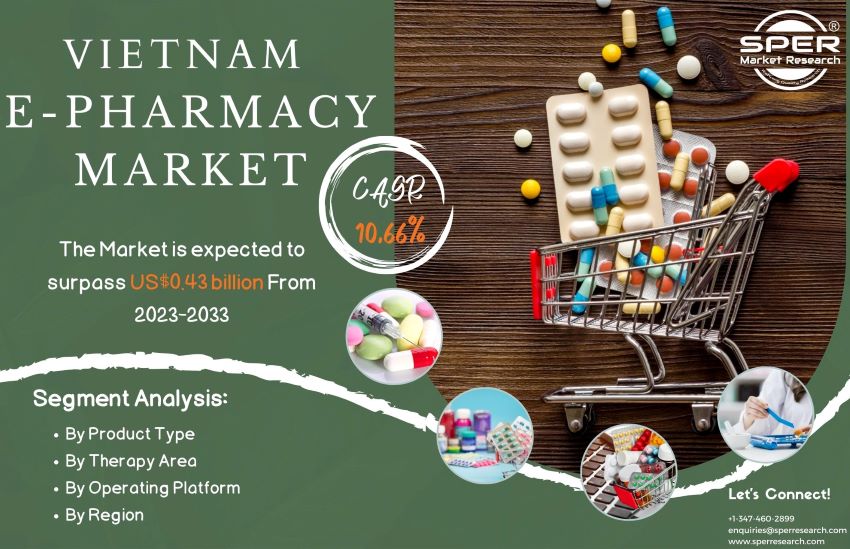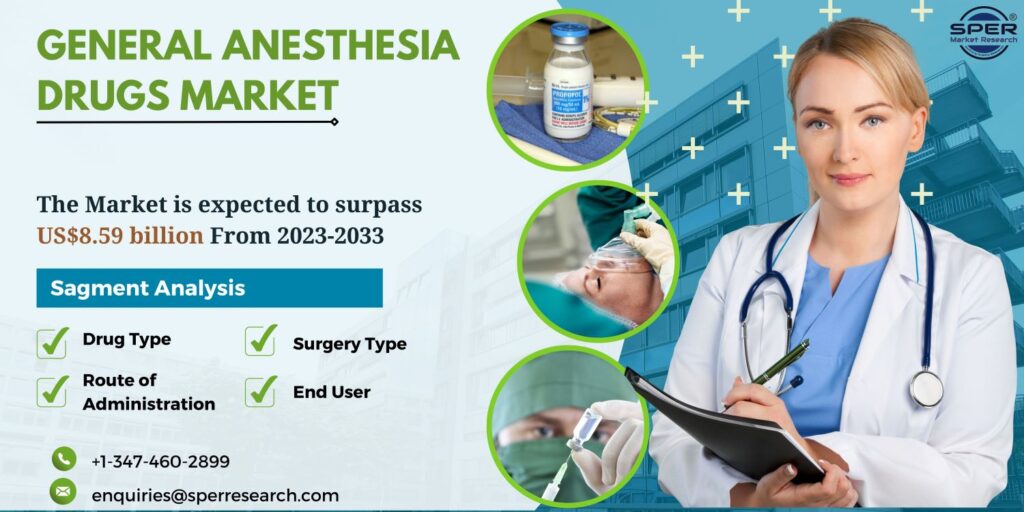An online platform for the healthcare sector called the “E-pharmacy market” enables the retail and wholesale distribution of pharmaceuticals, medical devices, and therapeutics online. The traditional pharmacy services are becoming digitalized, enabling customers to browse, buy, and receive pharmaceutical supplies via online channels.
According to SPER market research, ‘Vietnam E-Pharmacy Market Size- By Product Type, By Therapy Area, By Operating Platform – Regional Outlook, Competitive Strategies and Segment Forecast to 2033’ state that the Vietnam E-Pharmacy Market is predicted to reach USD 0.43 billion by 2033 with a CAGR of 10.66%.
The Vietnam e-pharmacy market is expanding as a result of a number of important factors. On the one hand, there is a sizable market for online pharmaceutical services given the nation’s quickly expanding internet and smartphone usage. E-pharmacies can benefit a population that frequently struggles to obtain healthcare, especially in rural areas, by providing convenience, accessibility, and a large selection of products. A suitable regulatory environment for e-pharmacy operations may be created by the gradual implementation of digital health policies by the Vietnamese government
However, there are considerable obstacles to be overcome in this sector. Priority should be given to safety and regulatory compliance issues. To maintain public safety and trust, pharmaceutical products sold online must be guaranteed as to their authenticity and quality. If the government wants to successfully control the e-pharmacy sector, it must implement stringent legislation. In some areas, Vietnam’s healthcare infrastructure and logistics may also be inadequate, making it difficult to properly distribute pharmaceuticals. Finally, it is anticipated that there will be more competition in the e-pharmacy sector. To compete, businesses would need to make large investments in technology, marketing, and customer service.
Demand for e-pharmacies in Vietnam grew as a result of the COVID-19 outbreak. Customers switched to internet marketplaces to purchase medical equipment, pharmaceuticals, and healthcare products throughout the outbreak despite constraints and safety worries. Due to the rising desire for contactless services and home delivery, e-pharmacies are being used much more frequently. During that time, e-commerce and digitization in the healthcare sector increased significantly.
Request For Free Sample Report @ https://www.sperresearch.com/report-store/vietnam-e-pharmacy-market.aspx?sample=1
Impact of COVID-19 on Vietnam E-Pharmacy Market
Geographically, The COVID-19 outbreak increased demand for e-pharmacies in Vietnam. Despite limits and safety concerns, customers moved to internet markets to purchase medical equipment, medications, and healthcare supplies throughout the pandemic. E-pharmacies are becoming increasingly popular as the need for contactless services and home delivery grows. During that time, there was a considerable increase in e-commerce and digitization in the healthcare sector. Additionally, some of the market key players are FPT Long Chau Pharma Joint Stock Company, mClinica Vietnam, Med247, Medcare Services and Investment Co.
Vietnam E-Pharmacy Market Segmentation:
The SPER Market Research report seeks to give market dynamics, demand, and supply forecasts for the years up to 2033. This report contains statistics on product type segment growth estimates and forecasts.
By Product Type: Based on the Product Type, Vietnam E-Pharmacy Market is segmented as; Prescription Medicines, Over-the-Counter Medicines.
By Therapy Area: Based on the Therapy Area, Vietnam E-Pharmacy Market is segmented as; Vitamins, Dermatology, Cold & Flu, Weight Loss, Others.
By Operating Platform: Based on the Operating Platform, Vietnam E-Pharmacy Market is segmented as; Websites, Apps.
By Region: This research also includes data for Northern region, Southern region, western region, Eastern region.
This study also encompasses various drivers and restraining factors of this market for the forecast period. Various growth opportunities are also discussed in the report.
For More Information, refer to below link:-
Vietnam E-Pharmacy Market Future Trends
Related Reports:
Follow Us –
LinkedIn | Instagram | Facebook | Twitter
Contact Us:
Sara Lopes, Business Consultant – U.S.A.
SPER Market Research
+1-347-460-2899









